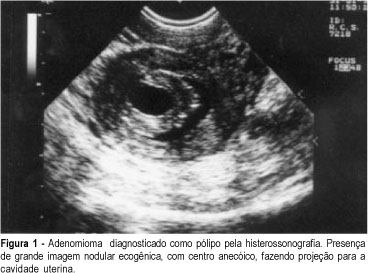Purpose: to determine the role of sonohysterography in the evaluation of abnormalities in the uterine cavity in patients presenting abnormal uterine bleeding, who had previously been selected by transvaginal ultrasonography. Methods: forty-eight patients presenting abnormal uterine bleeding and changes in the uterine cavity seen by transvaginal ultrasonography were selected, and they were in the menacme or postmenopause period. All patients underwent a sonohysterography, and later a hysteroscopy and/or a hysterectomy. The sonohysterographies were evaluated by two different physicians, and the diagnoses were compared. Results: the sonohysterography method showed high sensitivity and specificity for the diagnosis of benign pathologies in the uterine cavity. First, in the presence of polyps the sensitivity and specificity rates were 100 and 97%, respectively, second, in the presence of submucous myoma, they were 83 and 100%, and finally, concerning endometrial hyperplasia and normal endometrium, they were 100%. We diagnosed thirty-three cases of polyps, thirteen cases of submucous myoma, four cases of endometrial hyperplasia and three normal cases. The correlation between the diagnoses provided by the two physicians was high. Conclusions: sonohysterography is a safe and fast method which is very well tolerated by the patient, and has low levels of complications. Its high sensitivity and specificity allow this method to be used for routine diagnosis concerning benign pathologies in the uterine cavity of patients presenting abnormal uterine bleeding.
Transvaginal ultrasound; Uterine bleeding; Sonohysterography







